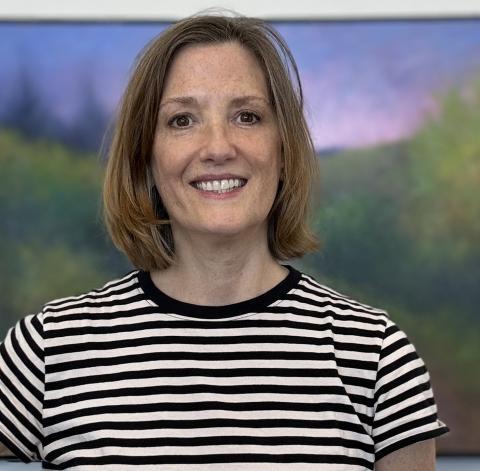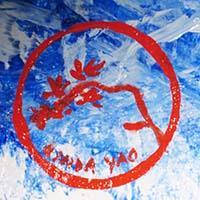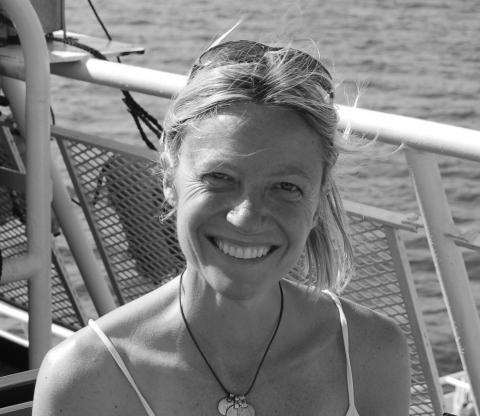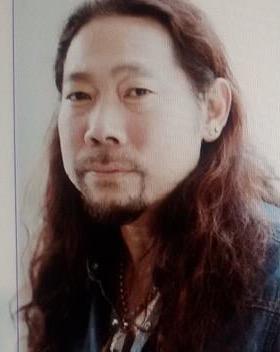Artist: Noah Dasho (authored by noahdasho)
Submitted by noahdasho on
Artist
Submitted by noahdasho on
Artist
 Submitted by victoriaveedell on
Submitted by victoriaveedell on
My paintings are based on nature, fashioned from memory and imagination, and imply landscapes not necessarily seen, but felt. I dissolve the landscape, leaving only what I consider to be the essence of nature. I continually examine the effects of light and form in the natural world. The dramatic effect of light that happens throughout the day sets the mood for each painting. The images created are grounded in a perspective associated with landscape; but rather than mirror the outside world I look inward reflecting on my experiences to find new meaning and relationships between form, light and perspective.
Submitted by michaelcheswisher on
 Submitted by lindayao on
Submitted by lindayao on
Born in New Zealand, Linda is a long-time Bay Area resident, inspired by California's cultural and geographical diversity. The San Francisco Bay is her favorite subject: she observes and sketches the daily ship traffic, bridges, freeways, cranes, sunrises, sunsets, fogs, moon rises, tides, seagulls - and the occasional cruise ship and America's Cup boat. She distills her experiences into paintings, prints and objects that explore the constatly-shifting nature and restlessness of the Bay and its denizens.
Submitted by gailragains on
I paint like a jazz musician improvises. Starting from the roots and a strong foundation, I branch out and make it my own.
From Abstract to Expressionistic, I like to push the envelope with bold, gestural brushstrokes and compelling colors. Whether I’m painting the figure, landscape or a still-life, I look for abstract shapes, stripping away the non-essentials to give a loose interpretation of form and movement, a strong interpretation of feeling and expression.
I paint in the moment.
If I start out with a plan, it most likely will change. If I stick to a plan, it will most likely fail. I let the canvas tell me where it wants to go.
I’ve been told that my loose and exuberant brushwork and lively pallet is reminiscent of the Bay Area Figurative Movement, yet that my work contains a freshness and sincerity that is all my own.
Submitted by laurawilliams on
After receiving my BFA from the University of Massachusetts, with high honors, I decided to take a road trip. A trip in which I spent three months in a car, cross-country camping, with not much more than a sketch book and a camera and, of course, some camping gear and occasionally, some food. I was living rather simply, after a grueling program involved in very scientific and serious concerns of the art world of that time. On this trip I fell passionately in love with the great outdoors and the magic of geology and archeology and history of the great mountains, rivers, streams, oceans, trees and the people that inhabit these lands. I had been a “city kid” with urban concerns and not so used to the power of reflection on the simple beauty that surrounds all of us. I have worked as a studio artist and a commercial artist for many years. Meanwhile, I have always been driven to find a spiritual path that inspired me and to find fulfillment. So, one day I decided that my passion was out there — the big world that surrounds me and all its amazing beauty. And that I belong out there. Being a person who loves the outdoors so much I could almost live outside, landscape painting on location is the most perfect choice for my subject matter. Combining being outside with my passion for painting makes the art-making process truly a joy-filled and spiritual experience. As a landscape painter en plein air, I find that being outside observing the ever changing dance of light to be true witness to the face of God. The experience of painting outdoors is awe-inspiring and, at times, humbling. My goal is to capture this experience, defined by color, light and atmosphere and my emotional interpretation of the moment. I work quickly, with large brushes and lots of paint to match the pace of the sun and to keep the scene that I am involved in fresh and energized—the energy that transforms and inspires me. My inspiration often comes from the simple, often overlooked in our busy lifes — a lone boat, or a simple tree surrounded in perfect light. Sometimes, a funny thing happens when I am setting up—I think I have an opportunity to paint a subject that I have designed to be good, challenging, unique, with good light, and then I turn around to get my gear and look up and see something far more paintable. Spontaneity — a painters gift! Sometimes I call these “paintings that paint themselves”. In other words, I didn’t have to move mountains — like the bible says we can! My paintings have often been described as peaceful and serene. I find this assessment to describe the fundamental reason why I paint. I am truly inspired by the peace and serenity of the natural world that surrounds me. Presently, I am trying to capture the beauty and perfection of a location that is endangered or already slated to be developed. "The mind of the painter should be like a mirror which always takes the colour of the thing that it reflects, and which is filled by as many images as there are things placed before it."
Submitted by davidbooth on
In my photography I try to find a way of seeing that cuts to the essential core of the subject, be it a solitary tree, a crowded sidewalk or a simple portrait.
 Submitted by tjasaowen on
Submitted by tjasaowen on
Tjasa (pronounced Tee-asha) Owen’s work is a confluence of her international travels, her enthusiasm for written correspondence and her love for landscapes, inland as well as coastal. Having grown up by the Atlantic seashore, she is drawn to the ever changing skies and coastal scenes. In addition, while living in France for three years and spending time in Tuscany, she was inspired by the endless rows of trees and distant hills which she has incorporated into some of her landscapes. During her foreign travels and time away from the studio, she photographs, sketches and captures landscape details and textures.
Each piece, for me, is unique and carries its own story. My landscapes are inspired by my love for the Atlantic & Pacific coastlines as well as my travels abroad. I will incorporate my memories of different places, textures and colours I have seen into the individual pieces. Rather than documenting any actual place, I am more interested in reassembling the elements of scenes I remember- the way we do with snapshots and scrapbooks - to create views that feel shared and remembered. I sometimes add postscripts and incomplete phrases from my journals or sketchbooks to imbue these new places with a sense of time and history. I liken my process to conjuring a landscape postcard in my head, reproducing it on canvas, and, by adding an ink stamp or words from my sketchbooks, it’s as if I am sending it back into the world. By making paintings that feel like correspondence, I invite viewers to invent their own stories about the places I create in my work.
Back in her San Francisco studio she integrates the themes of rural and coastal landscape as well as correspondence to create her well recognized larger format paintings. The artist employs acrylic, oil pastel as well as collage media in her canvases. Her subtle and whimsical notations on many of the pieces invite the viewer to create a personal relationship with the work of art open to their own interpretation.
Owen has studied fine arts, art history, and interior architecture on both American coasts and abroad. She attended and received her BA at the University of Virginia and studied at the National Academy of Art in New York, the Academy of Art in San Francisco and Coupa in Paris. Her work has been shown extensively in the US and internationally and has been acquired by many corporate collections as well as by a distinguished list of private collectors. Currently Tjasa lives in Mill Valley, CA with her husband and two children, Finn & Remy.
Tjasa Owen is represented on the East Coast by the The Eisenhauer Gallery on Martha’s Vineyard, the Harrison Gallery in Williamstown, Massachusetts, the Canfin Gallery in Tarrytown, NY, City Art Gallery in Greenville, NC, the Sheldon Fine Art Gallery in Naples, FL, Newport, RI and Saratoga, NY, the Five Main Gallery in Wickford, RI, the Jessie Edwards Gallery and the Glass Onion on Block Island, RI, Nahcotta Gallery in Portsmouth, NH, and Parker Gallery in Sea Island, GA. On the West Coast Tjasa is represented by the Hang Gallery in San Francisco, and the Tjasa Owen Studio.
Submitted by chuckthurston on
Visitors from the Past
Found Photographs from the Late 19th Century
For a brief span of only a few decades, from the late 1860's to the dawn of the twentieth century, ordinary people were photographed in a way that often yielded extraordinary results.
The durable, card-mounted albumen photo prints that were so popular during this period can still be found in antique shops. The larger size prints (usually 6.5" x 4.5") were known as "cabinet card" photographs and were often mailed to relatives for display in their homes. To fully appreciate the magic of this, you have to take yourself back to those days and imagine the wonder and excitement of seeing a photograph of a loved one for the first time!
Unlike modern photographs where the moment of exposure is nearly instantaneous, these images were recorded on glass plate negatives that required long exposure times, sometimes as long as five minutes. Compared with sitting for a painted portrait, this may not have seemed like such a long time, but it still required that the subject find a facial expression that could be held comfortably for the duration of the exposure.
In the best of these photographs, this requirement helped to create natural, truthful portraits that have an uncanny feeling of presence. These long exposure times captured a succession of moments — almost like a short video — during which the person remained still, but also very alive and present.
There is something in these pictures that is not found in later photographs. They capture light, but they also capture presence. This is a distinct subjective feature, and it gives these portraits their striking combination of immediacy and timelessness.
If the subject maintained good eye contact with the camera during the exposure, the resulting photograph would then convey the impression that he or she was actually looking out into the room from the cabinet card print when it was put up for display! The presence of the individuals in these pictures is not diminished by time. Even though we now have almost no information about who they were, we can still feel who they were.
This means that we can feel their qualities of character. This feeling can grow over time, and perhaps even tell us something about the wisdom of their day. As members of the human family, we are all related to the people in these pictures — they are all our "relatives."
In spite of their durability, most cabinet card photos have suffered significant deterioration over the past hundred years. Painstaking digital restoration is very much like cleaning a window. It gives us a clear view into the past, undiminished by spots, scratches, fading and discoloration. Given the nature of the original process, these photographs often contain rich detail, which allows the making of large life-size prints.
This would not be possible without high-resolution digital scanning and today's image editing software tools. These finished pieces thus represent an unusual bridge across time that is anchored at each end by very different, but uniquely complementary, possibilities.
 Submitted by veerakeat on
Submitted by veerakeat on
just keep painting and painting !!!!